Related Research Articles
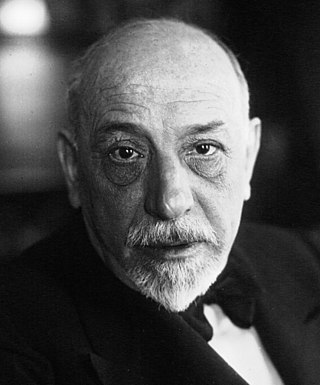
Luigi Pirandello was an Italian dramatist, novelist, poet, and short story writer whose greatest contributions were his plays. He was awarded the 1934 Nobel Prize in Literature "for his bold and ingenious revival of dramatic and scenic art". Pirandello's works include novels, hundreds of short stories, and about 40 plays, some of which are written in Sicilian. Pirandello's tragic farces are often seen as forerunners of the Theatre of the Absurd.

Agrigento is a city on the southern coast of Sicily, Italy and capital of the province of Agrigento.

Friedrich Wilhelm Eduard Gerhard was a German archaeologist. He was co-founder and secretary of the first international archaeological society.

Richard Hodges, is a British archaeologist and past president of The American University of Rome. A former professor and director of the Institute of World Archaeology at the University of East Anglia (1996–2007), Hodges is also the former Williams Director of the University of Pennsylvania Museum of Archaeology and Anthropology in Philadelphia. His published research primarily concerns trade and economics during the early part of the Middle Ages in Europe. His earlier works include Dark Age Economics (1982), Mohammed, Charlemagne and the Origins of Europe (1983) and Light in the Dark Ages: The Rise and Fall of San Vincenzo Al Volturno (1997).

Rodolfo Amedeo Lanciani was an Italian archaeologist, a pioneering student of ancient Roman topography. Among his many excavations was that of the House of the Vestals in the Roman Forum.
Giuseppe Lugli was Professor of ancient Roman topography at the University of Rome from 1933 to 1961.

Italo Gismondi was an Italian archaeologist. He is most famed for Il Plastico, a massive scale model of imperial Rome under Constantine the Great.
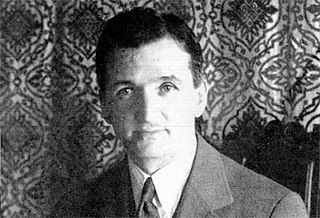
Luigi Maria Ugolini (1895–1936) was an Italian archaeologist.
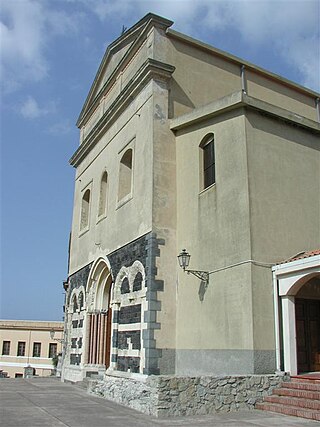
The Diocese of Patti is a Latin diocese of the Catholic Church located on the north shore of the island of Sicily. It is a suffragan of the Archdiocese of Messina-Lipari-Santa Lucia del Mela. Its patron saint is Bartholomew the Apostle, in whose honor the cathedral is named.

The Metropolitan Archdiocese of Palermo is a Latin diocese of the Catholic Church. It was founded as the Diocese of Palermo in the first century and raised to the status of archdiocese in the 11th century. The archbishop is Corrado Lorefice.

Mustafa Merlika-Kruja was one of the signatories of the Albanian Declaration of Independence. He was Prime Minister of Albania during the Italian occupation from December 4, 1941, to January 19, 1943.

The Archdiocese of Agrigento is a Latin Church ecclesiastical jurisdiction or archdiocese of the Catholic Church in Sicily, Italy. The historic diocese of Agrigento was also known as the Diocese of Girgenti, and Diocese of Agrigentum. It used to be a suffragan of the Archdiocese of Monreale. A metropolitan see, the Archdiocese of Agrigento has two suffragan dioceses in its ecclesiastical province.

The Diocese of Cefalù is a Latin diocese of the Catholic Church in Sicily, southern Italy. It is a suffragan of the Archdiocese of Palermo.
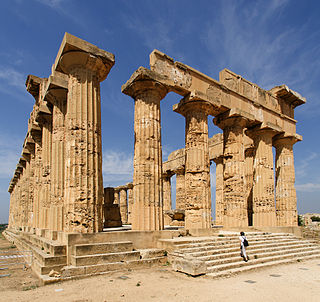
Jole Bovio Marconi was an Italian archaeologist who graduated with a degree in the topography of ancient Rome from the Sapienza University of Rome and specialized at the Italian School of Archaeology at Athens. She married her colleague Pirro Marconi, whom she met in her studies in Athens.

Semni Papaspyridi-Karouzou was a Greek classical archaeologist who specialized in the study of pottery from ancient Greece. She was the first woman to join the Greek Archaeological Service; she excavated in Crete, Euboea, Thessaly, and the Argolid, and worked as Curator of ceramic collections at the National Archaeological Museum in Athens for over thirty years. She experienced political persecution under the Greek military junta of 1967–1974. She has been described by the archaeologists Marianna Nikolaidou and Dimitra Kokkinidou as "perhaps the most important woman in Greek archaeology", and by the newspaper To Vima as "the last representative of the generation of great archaeologists".
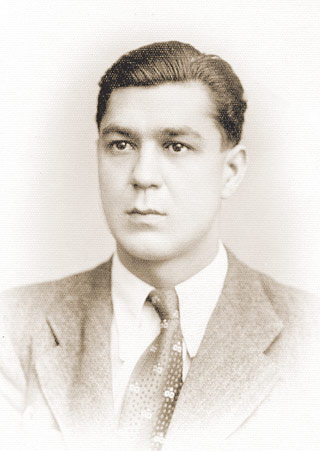
Dinu Adameșteanu was a Romanian-Italian archaeologist, a pioneer and promoter of the use of aerial photography and aerial survey in archaeology. From 1958 to 1964, he was director of Aerofototeca for the Italian Ministry of Public Education, he was a professor of Etruscology, Italian antiquities, and the topography of ancient Italy at the University of Lecce. At the same university, he was also director of the Institute of Archaeology, of the Department of Scholarship on Antiquity, and of the school of classical and medieval archaeology.
Alexander Hardcastle was a British archaeologist, who supervised archaeological work in Sicily, restoring the Greek Temples of Agrigento.
Domenico Mustilli was an Italian archaeologist who conducted archaeological research in Italy, Albania, and Kosovo. He contributed significantly to the development of Illyrian studies and Illyrology.
Leon Rey was a French archaeologist, known for his significant contributions to archaeology, particularly in Albania. He was the head of the French archaeological mission in Albania, established based on the Albanian-French agreement of 1923, which granted him a 30-year concession for archaeological research and excavations in the prefectures of Shkodër, Durrës, and Vlora. In Durrës, he conducted only limited surveys. From 1924 to 1938, excavations at Apollonia were carried out, during which significant discoveries were made, including the stoa, bouleuterion, odeon, and other monuments.
References
- ↑ "MARCONI, Pirro - Enciclopedia". Treccani (in Italian). Retrieved 2024-07-11.
- ↑ "Marconi ishte pionier i arkeologjisë sonë, pas Ugolinit" . Retrieved 2024-07-11– via PressReader.
- ↑ Llojdia, Gëzim (2014-08-18), Pirro Marconi drejtor i misionit arkeologjik italian në Shqipëri në vitet 1936-1938 – Dielli (in Albanian), retrieved 2024-07-11– via The Sun